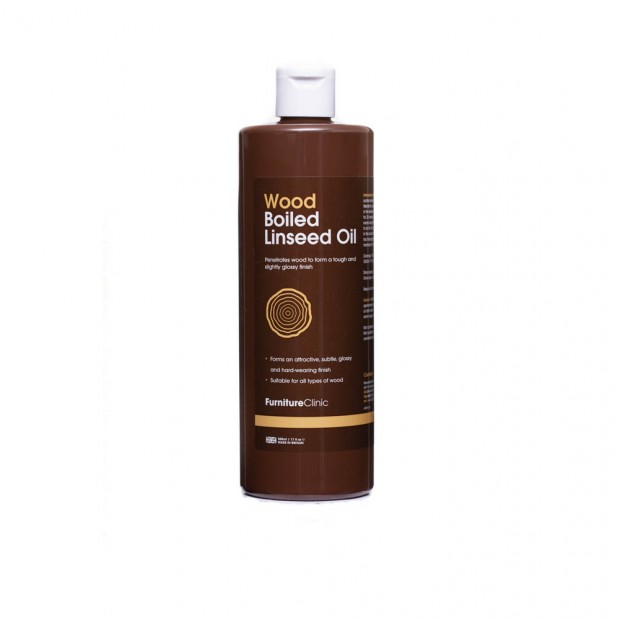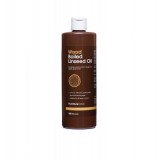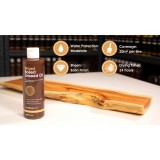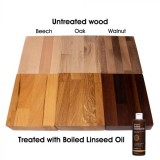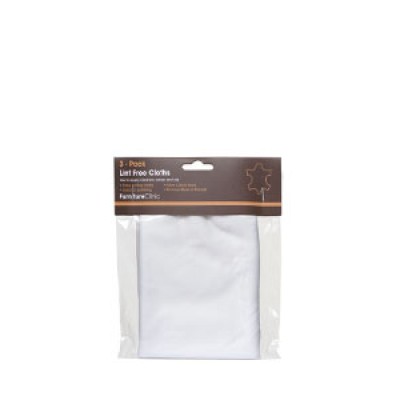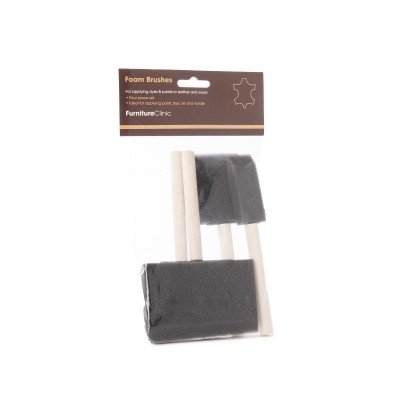About Boiled Linseed Oil
Similar to linseed oil, our Boiled Linseed Oil is a superior quality oil that has been treated with hot air, so it dries quicker, forming a tough, hard wearing finish, imparting a natural lustre.
Suitable for use on all wooden surfaces (except exterior Oak), terracotta tiles and all porous stone. Boiled Linseed Oil penetrates and seals the surface, providing protection for all interior and exterior surfaces.
Compliant with Articles in Contact With Food Regulations, Boiled Linseed Oil is also ideal for the treatment of wooden furniture and utensils used in the kitchen and dining areas, where contact with food, spills, and exposure to water and other liquids are a frequent hazard to unprotected surfaces.
Boiled Linseed Oil Features
Drying Time: 24 hours
Coverage: 20m² per litre
Coats: 3 coats to bare wood
Re-coat time: Once previous has dried
Maintenance: Once a year, or when showing signs of 'drying'
Application: Apply with a Foam Brush or Cloth
Boiled Linseed Oil is Suitable For
Boiled Linseed Oil can be use on all wooden surfaces both inside and outside. It can be used on every type of wood too, except exterior oak. It's great for:
- Interior & Exterior Wood
- Hardwoods and Softwoods
- Kitchen Worktops & Utensils
- Furniture
- Doors and Windows
- Hardwood Floors
- Toys
- Turned Wood
- Untreated timber and bare wood
It is also suitable for use on terracotta tiles and porous stone.
Boiled Linseed Oil’s Coverage and Shelf Life
Coverage: Up to 20m2 per litre.
Store in a cool dry place, away from direct sunlight.
Store between 10°C and 25°C.
Once opened, used within 3 years.
How to use Boiled Linseed Oil
Maintaining wood with Boiled Linseed Oil
For maintenance of new or used items, simply re-oiling once a year is sufficient for all year-round protection. Further coats can be applied to high use areas more frequently, if required.
Restoring older wood with Boiled Linseed Oil
When restoring old items of wood, it is important that you remove all previous oils, waxes or finishes before applying the Oil. If the surface feels rough, it should be sanded smooth first, for best results.
Boiled Linseed Oil Instructions
Shake well before use. If you are unsure of the finish, test it on an unseen area first.
Ensure the surface is clean and dry before application, and any old oils or waxes have been removed if restoring an item.
Apply liberally onto a lint free cotton cloth and wipe over the wooden surface following the direction of the grain. Leave it for 20 minutes to allow the oil to penetrate into the wood then wipe off any surplus oil with the same cloth.
Leave for 24 hours for the oil to dry then apply a second coat wiping off any excess after 20 minutes.
Apply a final coat of oil, following the above instructions. Leave for 48 hours before use.
Instructional Videos
Watch the below video to see what boiled linseed oil looks like when applied to wood, and to watch how to use it too.
Photos of Boiled Linseed Oil on wood
The below image shows how the Boiled Linseed Oil enhances the natural beauty of various shades of wood. In the examples below we have applied it to Beech, Oak and Walnut so you can see how it looks on light, medium and dark coloured woods.
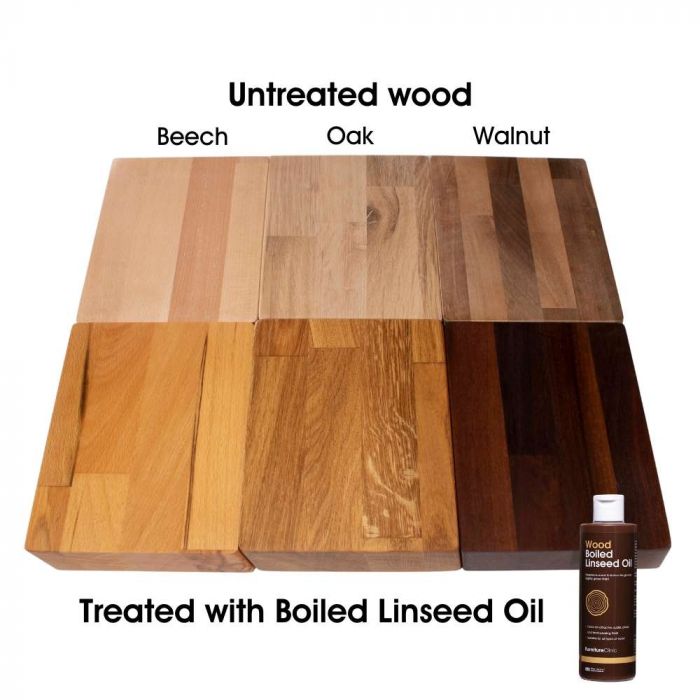
FAQ - Oiling wood with Boiled Linseed Oil
Q. What is the difference between Boiled Linseed Oil and raw Linseed Oil?
A. Boiled Linseed Oil is heat treated with metallic driers added. The benefit of this is that once treated it has a much faster drying time. Raw Linseed Oil can take around three days to dry, whereas our Boiled Linseed Oil dries within 24 hours. Overall results of protection do not differ.
Q. Can I use this on food preparation areas?
A. Boiled Linseed oil is safe for food preparation areas, however, as the water repellence of boiled linseed oil is only moderate, we would recommend using our Danish Oil for food preparation areas.
Q. Is Boiled Linseed Oil safe to use on toys, or items used by children?
A. Yes, once dry our Boiled Linseed Oil is completely safe and is compliant with Articles In Contact With Food regulations and so is fine for children.
Q. What effect does Boiled Linseed Oil have on wood?
A. Our Boiled Linseed Oil leaves a nice natural lustre finish to the wood, protecting it against water staining.
Q. Will the Boiled Linseed Oil darken wood?
A. Boiled Linseed Oil is not a stain and carries no colour properties in it, however it will slightly darken your wood when it is applied; we see this as enhancing the natural beauty of the wood.
Q. If Boiled Linseed Oil is safe to use on outdoor wood, why can it not be used on exterior oak?
A. Oak is extremely porous, so the Boiled Linseed Oil soaks in deep and takes a long time to dry. If the exterior conditions are damp, this can increase the drying time further allowing mould to develop on the oil before it dries.
Q. How should I dispose of used cloths with Boiled Linseed Oil on?
A. Your cloth / applicator used for oiling may spontaneously combust. It should be cleaned in warm soapy water to remove any excess oil and placed in an outside bin.
Q. What are the uses for boiled linseed oil?
A. Boiled Linseed Oil uses are far stretching. It is best known as a wood oil, for protecting and enhancing wooden surfaces, but it can also be used on terracotta tiles and porous stone. Not to be confused with raw linseed oil, which is often used for thinning oil paints.
Boiled Linseed Oil
Boiled Linseed Oil is heat treated so it dries faster than regular linseed oil. It penetrates wood to form a tough finish, producing a natural lustre.
-
Superior quality oil forms hard wearing finish
-
Suitable for all types of wood (except exterior oak)
-
Forms an attractive, subtle, natural lustre
-
Helps prevent drying and deterioration
-
Can also be used on stone and terracotta
















